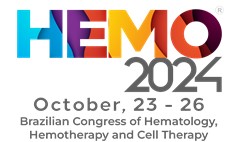
Multiple Myeloma (MM) is a plasma cell neoplasm characterized by the accumulation of monoclonal plasma cells in the bone marrow, leading to osteolytic lesions, anemia, infections, hypercalcemia, and kidney impairment. This review focuses on managing kidney disease in MM, particularly light chain cast nephropathy.
CaseA 66-year-old male with progressive fatigue, dizziness, weight loss, and recurrent pneumonia was referred for anemia evaluation on 28.11.2024. Laboratory results showed:
• Hemoglobin: 5.4 g/dL, Hematocrit: 18.3%, Platelets: 56 × 10³/uL
• Creatinine: 1.39 mg/dL, Calcium: 9.7 mg/dL, Total Protein: 9 g/L, Albumin: 2.9 g/L
• IgA: 4295 mg/dL, IgG: 141 mg/dL, IgM: < 5 mg/dL
Peripheral smear showed rouleaux formation, and protein electrophoresis revealed a gamma peak. Immunofixation detected IgA-lambda bands, with bone marrow biopsy confirming 70% plasma cell infiltration. The patient was started on VCD chemotherapy (bortezomib, cyclophosphamide, dexamethasone). Neutropenia worsened, requiring G-CSF support. Renal function improved, and zoledronic acid was given for widespread lytic lesions. Due to Febrile Neutropenia (FEN), treatment was switched to VRD (bortezomib, lenalidomide, dexamethasone). After four cycles, symptoms improved, and cytopenia’s resolved. Although serum immunofixation remained positive, the patient achieved a Very Good Partial Response (VGPR). A follow-up bone marrow biopsy is planned after four more cycles, with Autologous Stem Cell Transplant (ASCT) scheduled if the response continues.
ConclusionManaging MM with renal impairment requires balancing efficacy and toxicity. A four-drug regimen (Dara-CyBorD or Isa-CyBorD) is preferred in fit patients with severe AKI, while a three-drug regimen (Dara-Vd) is recommended for frail patients. If daratumumab or isatuximab is unavailable, CyBorD is an alternative. Bortezomib, daratumumab, and isatuximab can be safely used in kidney dysfunction without dose adjustments. Lenalidomide is avoided in AKI unless refractory. In this case, VCD was chosen initially, and after renal improvement, VRD was used despite FEN episodes. The patient achieved VGPR and is now planned for ASCT.






